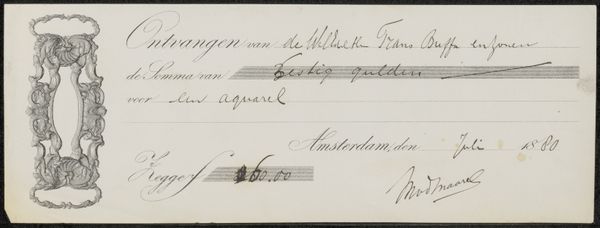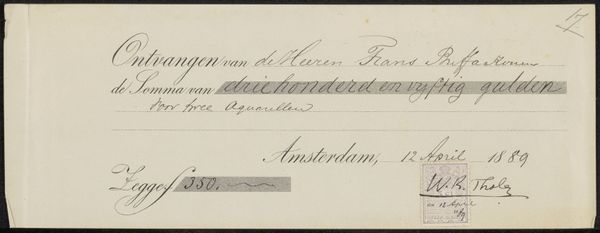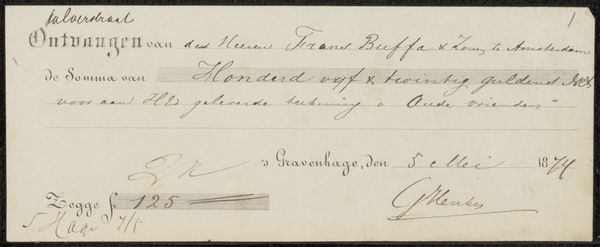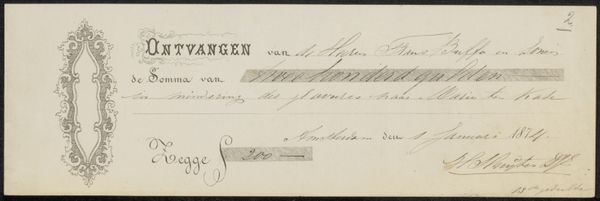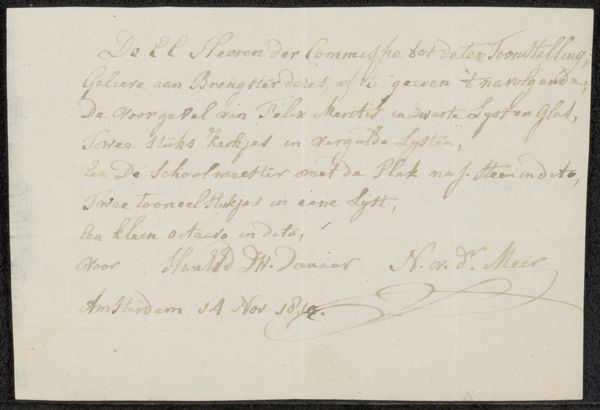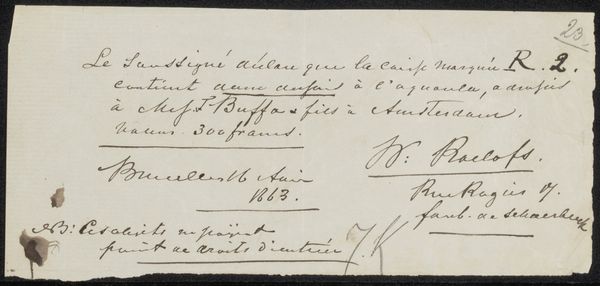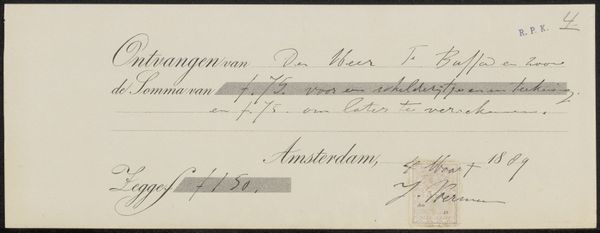
Ontvangstbewijs aan Lambertus Hardenberg (1822-1900) Possibly 1847
0:00
0:00
drawing, paper, ink
#
portrait
#
drawing
#
aged paper
#
hand-lettering
#
ink paper printed
#
hand drawn type
#
hand lettering
#
paper
#
personal sketchbook
#
ink
#
hand-drawn typeface
#
fading type
#
sketchbook drawing
#
sketchbook art
#
realism
Copyright: Rijks Museum: Open Domain
This "Ontvangstbewijs aan Lambertus Hardenberg" was created in 1847 by Hendrikus van de Sande Bakhuyzen, using ink on paper. It’s a seemingly simple piece, yet rich with social context. Look closely at the cursive script; each stroke, curve, and flourish speaks to the importance of penmanship in 19th-century Dutch society. Calligraphy was more than just writing, it was a mark of education and social standing. The receipt documents a financial transaction. The paper itself, likely handmade, and the ink, carefully mixed, further emphasize the value placed on craftsmanship in this period. The act of handwriting transforms a mundane transaction into a personal exchange. It’s a direct connection to the artist, and to the broader economic and social relations of the time. Consider how today’s digital transactions lack this tangible connection. This humble receipt, made with care and attention, invites us to reflect on the labor, materials, and social rituals embedded in even the simplest of objects.
Comments
No comments
Be the first to comment and join the conversation on the ultimate creative platform.

